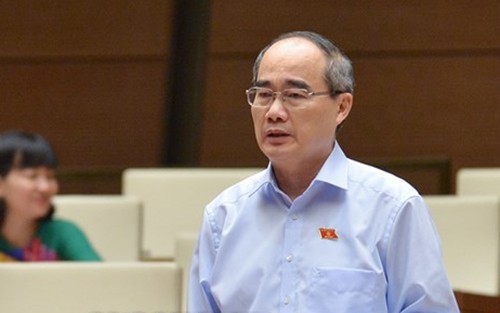The municipal leader’s remarks suggested that the country should embark on the process of reopening its economy, proactively protecting domestic production and business capacity, whilst promoting economic development and ensuring social stability.
    |
 |
|
Nguyen Thien Nhan, Secretary of the Ho Chi Minh City’s Party Committee |
From "no fear" to "fear"
On January 1, China suffered its first casualty caused by the COVID-19. By January 25, China had recorded 1,000 infections, with January 28 seeing 100 people die. At the time, the world had yet to come up with a name for the virus. After China confirmed the detection of 12,000 infections in addition to 1,000 deaths on February 1, the World Health Organization (WHO) swiftly declared the virus a global epidemic, but failed to recommend travel restriction between countries.
March saw EU nations and Singapore argue over whether citizens should wear masks or not, with the WHO announcing on 11 March that the global epidemic had hit 117 countries with 118,000 infections, causing 4,240 fatalities. Statistically, this means out of every 1,000 people suffering from the deadly virus, 37 died. Meanwhile, the President of the United States had so far failed to consider the epidemic to be an important issue for his nation.
According to Nhan, the opening three months of the year saw the world go through a period of citizens not needing to wear face masks, not going through travel restrictions between countries, and a failure to shut down schools.
After enduring the global epidemic for six months, four regulations regarding epidemic prevention should be complied with, including wearing masks, limiting contact, washing hands by using sanitiser, and strictly carrying out medical quarantine if necessary.
The first phase of the virus saw the infection rate increase only slowly, with only 30 cases in 30 days, causing many countries not to fear. The second phase witnessed 100 cases leap to 1,000 within 10 days, causing many nations to begin to fear. They feared even more so when 1,000 cases rose to 32,000 within 15 to 30 days, Nhan analysed.
In addition, Nhan believes there are currently four types of epidemic-hit nations in the world. The first consists of countries in their second phase which have reported increasing infection rates such as the US, Russia, Brazil, and India but have not moved into another stage.
The second consists of nations in stage three who have had the highest infection rates but have experienced a gradual reduction, including Germany, France, and Italy. The third is of safe countries with an average of less than 10 infected cases per million, including Laos and Cambodia. The final group is of countries that have never reached the figure of 1000 cases per 1 million people, meaning that they have been safe since the beginning of the epidemic, such as Vietnam and Myanmar.
Possibility to announce an end to the epidemic domestically
Referring to solutions for declaring the country to be free from the epidemic, the leader said that there are nine groups of solutions which are set to be delivered to NA deputies later due to limited speech time. But with the current results to tackle the epidemic nationwide, Nhan believes that it is necessary to announce the end of the epidemic in the country as it has guaranteed each of the three criteria.
Firstly, the rate of infected cases per 1 million people is currently no more than five as there are only 3.1 infected people per 1 million people at present. Secondly, the percentage of people receiving treatment is no more than a single person per 1 million people, in fact only 0.2 people, whilst the third is that there has been no deaths.
Nhan underlined the need to come up with a roadmap to gradually open things up with other countries as a means of making the most of foreign investment markets whilst stimulating the domestic market. This can be done in a manner to utilise the country’s strengths in national culture, politics, and economics.
Furthermore, Nhan also lavished praise on the nation’s effort to bring the epidemic under control, with the total number of infections only ever reaching 334.
With regard to how the nation should proceed, the leader stated that the country has maintained economic relations with foreign partners, but only 17 of them represent important partnerships, with Vietnam receiving 90% of foreign investment, 80% of trade, and 80% of tourists in these partnerships. Therefore, it must be considered essential to open doors to these 17 countries in line with an official roadmap and bilateral agreements.
Between May and August this year, 10 out of the 17 countries will no longer fall into the criteria of less than 10,000 people receiving treatment per 1 million people, most notably Japan, China, the Republic of Korea, Taiwan (China), Thailand, Hong Kong (China), Germany, and Australia. As a result, the nation needs to devise a plan to open its doors to these 10 nations. For the remaining seven countries that are not considered to be safe due the COVID-19, such as as India, the US, and Singapore, there must be follow ups done so operations can resume as soon as they are fully able to meet the necessary conditions, Nhan noted.
Source: VOV